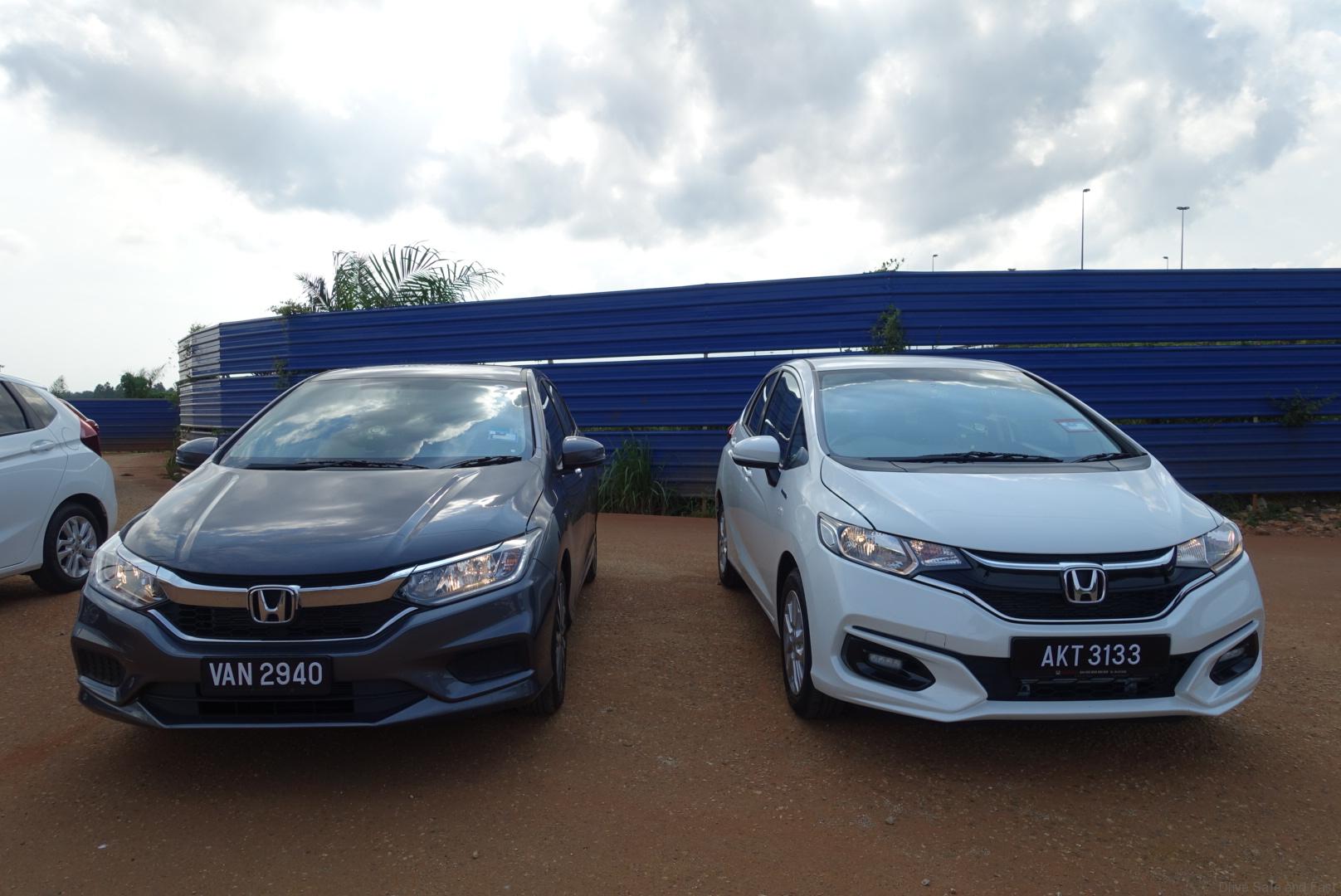Earlier this year, Honda Malaysia launched updated versions of their Jazz and City models – two very popular B-segment entries. The 2017 versions of these cars brought a host of new features, all-round improvements as well as a more streamlined range of variants including the ALL NEW Sport Hybrid models.
Giving Customers a Choice Between Full Spec Petrol or Mid Spec Sport Hybrid
Strangely enough, the Sport Hybrid models on both the City and Jazz were positioned as mid ranged alternatives and not flagship models.
They call this a ‘Y’ strategy. Instead of giving us 4 variants of each car that are positioned from least luxurious to most luxurious, they did something different. Instead of the pricing increasing from ‘S’, ‘E’, ‘V’, ‘Sport Hybrid’, it’s more like ‘S’, ‘E’, ‘Sport Hybrid’ OR ‘V’.
The ‘S’ model is still the base model, and the ‘E’ model adds a few more features for a higher price. But then, consumers can either choose between the Sport Hybrid or ‘V’ grade.
The ‘V’ grade is like the full-spec version of the ‘E’ or ‘S’ model while the Sport Hybrid takes the ‘E’ grade spec, adds minor features like Cruise Control on the Jazz and LED taillights and 16” alloy wheels on the City. And, the Sport Hybrid models are kept slightly cheaper than the full spec ‘V’ grade non-hybrid variant.
Do we call it ‘Hybrid’, ‘Sport Hybrid’, ‘i-DCD’ or ‘Sport Hybrid i-DCD’?
On the car itself, you only see the word ‘HYBRID’ on the sides and rear. That makes sense. Even on most of the brochures, they are refered to as City Hybrid and Jazz Hybrid. So yes, refer to these cars as ‘Hybrid’ grades of the City or Jazz.
But on the marketing material, the term ‘Sport Hybrid’ is used. Sometimes ‘Sport Hybrid i-DCD’. To be clear, ‘i-DCD’ stands for ‘Intelligent Dual-Clutch Drive’. That’s because the main component that does a lot of the work here is the new 7-speed gearbox. We’ll explain below. ‘Sport Hybrid’ isn’t its official grade. Think of it as more of a term to describe the kind of system they have here.
Five components that Make Up the ‘i-DCD’ system
1) First of all, this Hybrid model uses a DIFFERENT 1.5-litre engine than the standard City or Jazz.
The standard model’s 1.5-litre engine uses a SOHC petrol engine with the standard Otto cycle. This produces 118hp @ 6,600rpm and 145Nm @ 4,600rpm.
The engine in the ‘Hybrid’ model uses a DOHC petrol engine with an ‘Atkinson cycle’ and ‘Idle Stop’ function. This produces 108hp @ 6,000rpm and 134Nm @ 5,000rpm.
As you can tell, the engine in the engine in the Hybrid model is tuned for maximum fuel-efficiency, but isn’t too far behind in terms of power.
2) The 7-speed Dual-Clutch Transmission and Electric Motor
That’s right, the gearbox and electric motor are housed within the same module. What’s really cool is that motor is small enough to be integrated with the 1st gear. That means unlike other Dual Clutch Transmissions, you get a smooth start with ZERO juddering. We tested this, and it really works!
The compact motor brings the combined system output up to 137hp and 170Nm of torque. The motor itself can take over completely under certain circumstances.
3) Servo Assisted Brakes
One component of many hybrid cars that suffers is the brakes. Because hybrid cars usually use regenerative braking systems to charge the batteries, they usually end up feeling really unresponsive.
Honda tackled this by using an Electric Servo Assisted braking system. This advanced braking system puts a great level of responsiveness back into the Hybrid models and works really well in real life. Plus, it maximises the system’s regenerative braking too.
4) The Compact Battery
Unlike the previous Honda IMA Hybrid system, the battery tech used here is Lithium-ion based. That means it can hold 1.5X more charge while being 23% smaller in terms of volume and 5.6% lighter. This means the boot space is not affected. Its voltage and system output is also far superior.
In addition, Honda has sold more than a quarter of a million of the Jazz Hybrid models in Japan since 2013. Only 0.1% of these batteries have had to be replaced.
In Malaysia, the batteries are covered by warranty for 8 YEARS (Unlimited mileage) and cost just RM5,513 to replace – cheaper or as cheap as other major powertrain components.
5) A fully electric Compressor
A big complaint in hybrid cars and cars equipped with an engine start/stop system is that the air conditioning system starts to spit out warm air in traffic. That’s because most systems rely on an air cond compressor that uses the engine to work. So when the engine is off, the compressor goes off.
With these hybrid models, the air cond compressor is fully electric and can still operate when the engine shuts off in traffic. This ensures cabin temperature stays within 4 degrees celcius of the set temperature at all times.
The City and Jazz Hybrid Models Are Tuned For Sporty Handling
Due to the added weight of the i-DCD system and the sporty emphasis of these models, Honda have taken it upon themselves to improve both the Jazz and City chassis for the Hybrid variants.
For the City Hybrid, the areas around the front and rear suspension have been made more rigid. That is, the A-pillars and area behind the rear passenger seats have been reinforced. The Steering Gear Ratio in the City is increased by 15.6% and the springs and dampers have been changed.
The Jazz Hybrid gets a Performance Rod by the rear torsion beam and a 12% increase in its steering gear ratio as well as tuned springs and dampers. However, the slight advantage in weight and wheelbase means the Jazz has its own performance benefits.
Both models have received better insulation for improved NVH characteristics.










